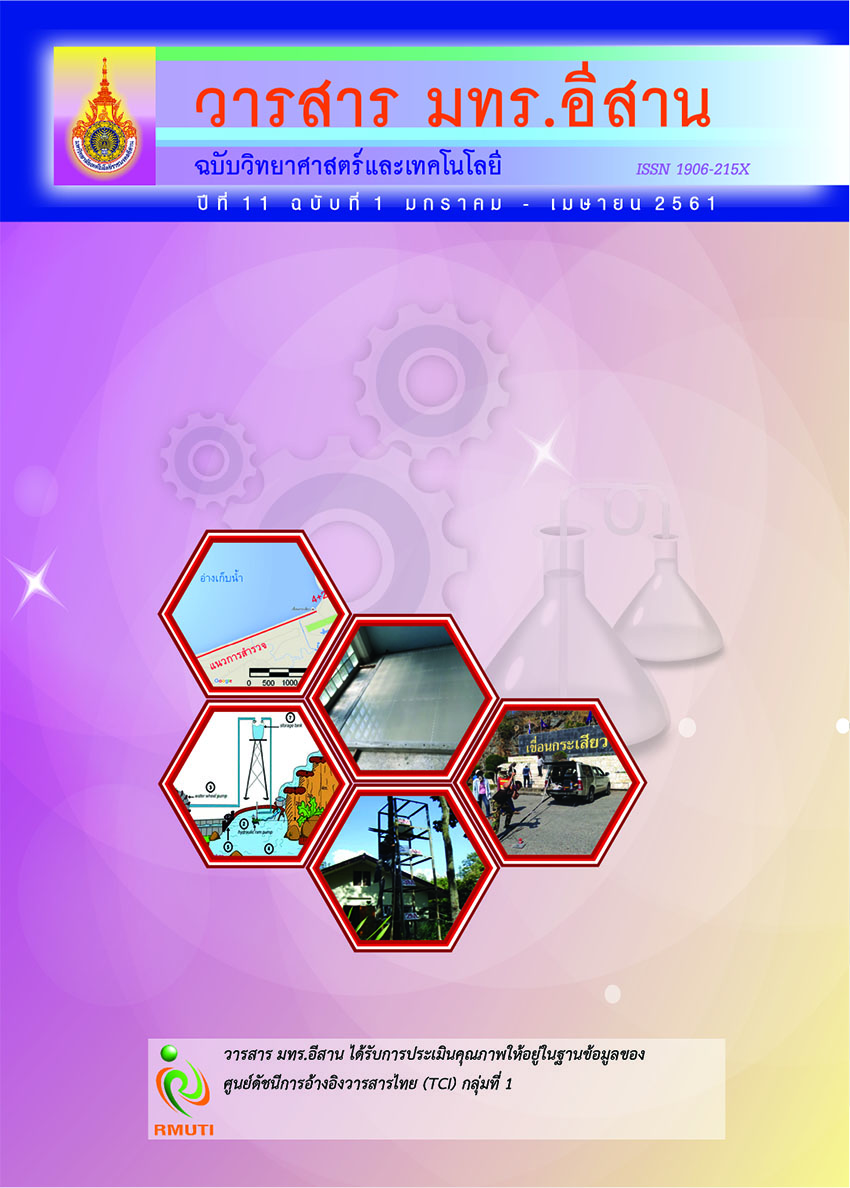An Analysis of Hollow-Sounding Tiles using Fast Fourier Transform
Main Article Content
Abstract
Hollow-sounding tile inspection is the required process of construction quality inspection
because hollows under tiles may lead to the defections such as unbonded tiles or broken
tiles in case some objects fall onto the surface. These defects will be causes of accidents
and injuries when those areas were occupied. In order to inspect a hollow-sounding
tile, the inspector must listen to that sound to classify the type of sound which it lacks
any standardize. This paper proposes the audio signal analysis from tiling inspection in
frequency domain to classify a dull or hollow sound. The test tiling area was mocked up
in laboratory for tapping on the tile surface and collecting the audio signal to analysis.
The analysis results indicated the proposed method can identify the dull and hollow
sounding tiles. The accuracy is up to 98.73 %. It can use to be a guideline for developing
the standard tiling inspection method.
Article Details
References
Composite Structures. Composite Structures. Vol. 51, Issue 1, pp. 63-71. DOI : 10.1016/S0263-8223
(00)00125-2
[2] Sansalone, M. and Carino, N. J. (1989). Detecting Delaminations in Concrete Slabs with and
without Overlays using the Impact-Echo Model. ACI Materials Journal. Vol. 86, No. 2,
pp. 177-184
[3] Mori, K., Spagnoli, A., Murakami, Y., Kondo, G., and Torigoe, I. (2002). A New Non-Contacting
Non-Destructive Testing Method for Defect Detection in Concrete. NDT and E International.
Vol. 35, No. 6, pp. 399-406
[4] Huang, Y. H., Ng, S. P., Liu, L., Li, C. L., Chen, Y. S., and Hung, Y. Y. (2009). NDT&E using
Shearography with Impulsivethermal Stressing and Clustering Phase Extraction. Opticsand
Laser in Engineering. Vol. 47, pp. 774-781
[5] Hung, Y. Y., Chen, Y. S., Ng, S. P., Liu, L., Huang, Y. H., Luk, B. L., Ip, R. W. L., Wu, C. M. L.,
and Chung, P. S. (2009). Review and Comparison of Shearography and Active Thermography
for Nondestructive Evaluation. Materials Science and Engineering R Reports. Vol. 64,
No. 5, pp. 73-112. DOI: 10.1016/j.mser.2008.11.001
[6] Luk, B. L., Liu, K. P., Tong, F., and Man, K. F. (2010). Impact-Acoustics Inspection of Tile-Wall
Bonding Integrity Via Wavelet Transform and Hidden Markov Models. Journal of Sound and
Vibration. Vol. 329, Issue 10, pp. 1954-1967. DOI: 10.1016/j.jsv.2009.11.038
[7] Wu, H. and Siegel, M. (2000). Correlation of Accelerometer and Microphone Data in the Coin
Tap Test. IEEE Transaction on Instrumentation and Measurement. Vol. 49, No. 3, pp. 493-497
[8] Ito, T. and Uomoto, T. (1997). Nondestructive Testing Method of Concrete using Impact
Acoustics. NDT & E International. Vol. 30, Issue 4, pp. 217-222. DOI: 10.1016/S0963-8695
(96)00059-X
[9] Asano, M., Kamada, T., Kunieda, M., and Rokugo, K. (2003). Impact Acoustics Methods
for Defect Evaluation in Concrete. In Proceedings of Nondestructive testing - Civil Engineering
2003. DOI: 10.1016/j.jsv.2005.11.017
[10] Tong, F., Xu, X. M., Luk, B. L., and Liu, K. P. (2008). Evaluation of Tile - Wall Bonding Integrity
Based on Impact Acoustics and Support Vector Machine. Sensors and Actuators A: Physical.
Vol. 144, pp. 97-104. DOI: 10.1016/j.sna.2008.01.020

